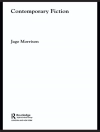David Bowie and Romanticism evaluates Bowie’s music, film, drama, and personae alongside eighteenth- and nineteenth-century poets, novelists, and artists. These chapters expand our understanding of both the literature studied as well as Bowie’s music, exploring the boundaries of reason and imagination, and of identity, gender, and genre. This collection uses the conceptual apparata and historical insights provided by the study of Romanticism to provide insight into identity formation, drawing from Romantic theories of self to understand Bowie’s oeuvre and periods of his career. The chapters discuss key themes in Bowie’s work and analyze what Bowie has to teach us about Romantic art and literature as well.
Daftar Isi
1. Introduction: David Bowie and Romanticism.- 2. David Bowie and Romantic Androgyny.- 3. Negative Capability in Space: The Romantic Bowieverse.- 4. Drug Use and Drug Literature from the Eighteenth Century to David Bowie.- 5. Capitalist Co-optation, Romantic Resistance, and Bowie’s Allegorical Performance in Nicolas Roeg’s The Man Who Fell to Earth.- 6. Too Late to Be Late Again: David Bowie, the Late 1970s, and Romanticism.- 7. Relics of The Future: The Melancholic Romanticism of Bowie’s Berlin Triptych.- 8. “Rebel Rebel”: Bowie as Romantic “Type”. – 9. The Goblin King, Absurdity, and Nonbinary Thinking.- 10. 1. Outside as Bowie’s Gothic Technodrama: Fascism and the Irrational Near the Turn of the Millennia.- 11. “Blackstar”: David Bowie’s Twenty-First-Century Ars Moriendi.
Tentang Penulis
James Rovira is a freelance writer, scholar, and poet who currently teaches at Valencia College and Keiser University. His books include Reading as Democracy in Crisis: Interpretation, Theory, History (2019), Reading for College and Beyond (Lulu 2019, a first year writing text), Rock and Romanticism: Post-Punk, Goth, and Metal as Dark Romanticisms (Palgrave Macmillan, 2018), Rock and Romanticism: Blake, Wordsworth, and Rock from Dylan to U2 (2018), and Blake and Kierkegaard: Creation and Anxiety (2010).












